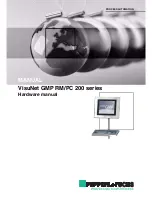
GPS Sensor
This function requires the installation of Software Upgrade 2.
GPS (Global Positioning System)
Space‐based global navigation satellite system
GPS provides positioning, navigation, and timing services to worldwide users
GPS receiver (sensor) gives digital information about position (longitude, latitude,
height), ground speed, course, and status
Two types of GPS receivers:
CAN output ‐> Read in messages via CAN Input of DDU 8 (not covered here)
Serial output ‐> Read in messages via RS232 Interface of DDU 8 (serial interface
2)
Serial interface characterization
Serial Interface is characterized by:
Voltage levels: RS232 is standard (+/‐12 V), UART (0 V/ 5 V) needs level shifter
Baud rate: 9,600 is standard for GPS, DDU 8 supports 1,200 to 115,200 baud. GPS
Rx interface baud rate must match DDU 8 interface baud rate. DDU 8 Baud rate
can be set with the ‘GPS_BAUDRATE’ characteristic Data format: DDU 8 expects 8
data bits, no parity bit, 1 stop bit (8N1)
Protocol
DDU 8 expects NMEA Protocol (ASCII).
The following messages are decoded:
Message
Function
GGA
GPS fix information
GSA
Overall satellite data
GSV
Detailed satellite data
RMC
Recommended minimum data for GPS
VTG
Vector track and speed over the ground
On most GPS sensors, these messages are activated in the default configuration.
Sensor recommendation
The system has been tested with the Navilock NL‐8004P MD6 Serial PPS Multi
GNSS Receiver. This sensor is based on a U‐Blox 8 chipset and is fully configura‐
ble with the Navilock “U‐Center” software. To use this sensor with Bosch Motor‐
sport components the transfer rate, the satellite system and the update rate
needs be reconfigured. More information about the configuration can be found
in the Appendix.
17
17.1
17.1.1
17.2
17.3
17 | GPS Sensor
146 / 160
DDU 8 Manual
Bosch Motorsport















































